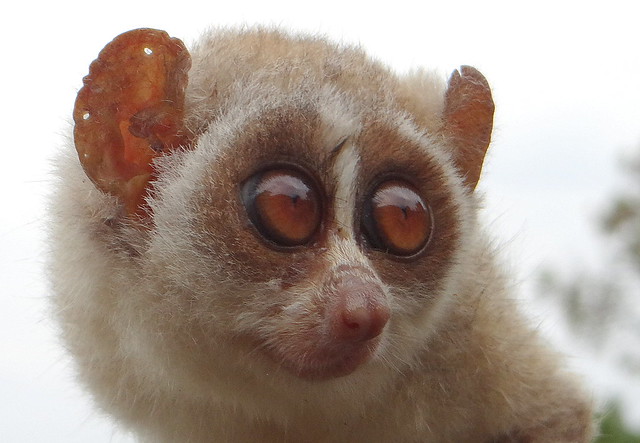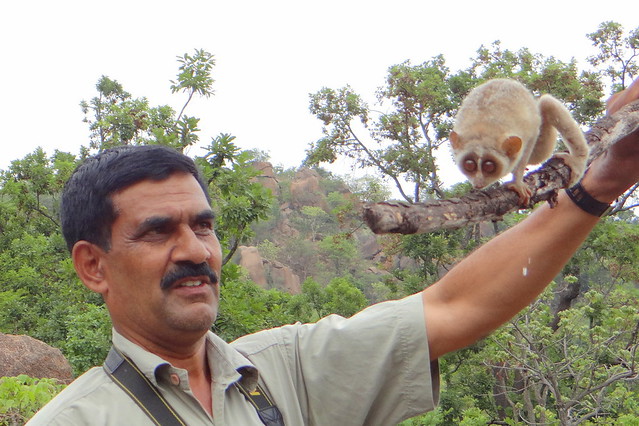Rescue and Release The Slender Loris, Devarayana Durga State Forest, Tumkur District, 010514
May 2, 2014
I’ve been lucky enough to spot the
at several places in Karnataka: the campus of the Indian Institute of Science, the Ramakrishna Mission Ashram at Shivanahalli, and at Nagavalli village, in Tumkur District.
 Despite the slew of studies on their behaviour and ecology in the last decade, they still remain among the least known of all primate species] Like other lorises, they are nocturnal and emerge from their roost cavities only at dusk.
They are mainly insectivorous. In southern India, the nominate race is often found in acacia and tamarind dominated forests or scrubs near cultivations. Males hold larger home ranges than females. They are usually solitary while foraging, and it is rare for them to be seen in pairs or groups. However they may roost in groups of up to 7, that include young of the recent and older litters. Adult males and females have individual home ranges and sleeping group associations are usually composed of a female and her offspring. They communicate with a range of vocalizations and also use urine and scent marking.
Although considered a Least Concern on the IUCN Red List and classified under Schedule I (Part 1) of the Indian Wildlife Act, 1972, the threat to these primates is increasing. Loris is used to make love potions, treat leprosy and eye ailments.Habitat fragmentation is also a threat to the loris population, as well as loss of acacia trees, which is a preferred tree species for the loris.
Well, that's all the information. We were privileged to be able to see this animal in daylight!
Gundappa Master said that an adult male had been found in the home of a villager in Hebbur, about 11 km from his home. By the time we reached his place, he had rescued the creature and brought it home. It was decided to release the Loris in the heavy-foliage Devarayanadurga State Forest.
We were eager to take a look at the little fellow before we took him to the release area, and Gundappa Sir opened the shoe box in which he'd kept him, ready to be taken on his journey to freedom.
Despite the slew of studies on their behaviour and ecology in the last decade, they still remain among the least known of all primate species] Like other lorises, they are nocturnal and emerge from their roost cavities only at dusk.
They are mainly insectivorous. In southern India, the nominate race is often found in acacia and tamarind dominated forests or scrubs near cultivations. Males hold larger home ranges than females. They are usually solitary while foraging, and it is rare for them to be seen in pairs or groups. However they may roost in groups of up to 7, that include young of the recent and older litters. Adult males and females have individual home ranges and sleeping group associations are usually composed of a female and her offspring. They communicate with a range of vocalizations and also use urine and scent marking.
Although considered a Least Concern on the IUCN Red List and classified under Schedule I (Part 1) of the Indian Wildlife Act, 1972, the threat to these primates is increasing. Loris is used to make love potions, treat leprosy and eye ailments.Habitat fragmentation is also a threat to the loris population, as well as loss of acacia trees, which is a preferred tree species for the loris.
Well, that's all the information. We were privileged to be able to see this animal in daylight!
Gundappa Master said that an adult male had been found in the home of a villager in Hebbur, about 11 km from his home. By the time we reached his place, he had rescued the creature and brought it home. It was decided to release the Loris in the heavy-foliage Devarayanadurga State Forest.
We were eager to take a look at the little fellow before we took him to the release area, and Gundappa Sir opened the shoe box in which he'd kept him, ready to be taken on his journey to freedom.
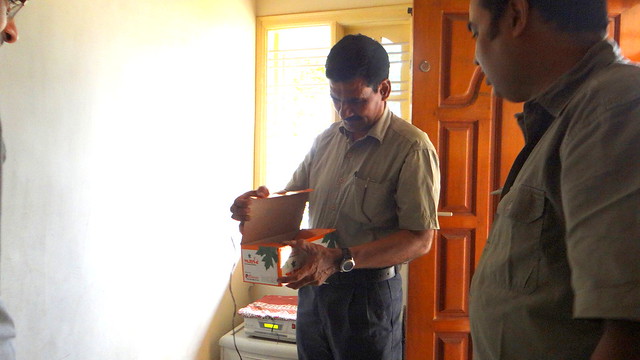 An arm and a leg show themselves:
An arm and a leg show themselves:
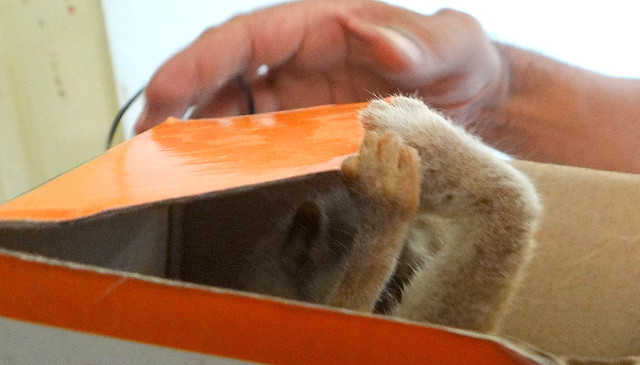 At last, we could see the little primate. He didn't seem stressed at all.
At last, we could see the little primate. He didn't seem stressed at all.
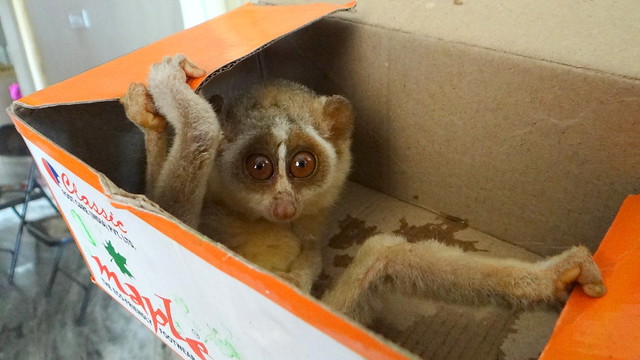 Gundappa Sir sets off on the release. The sack contains a Bronzeback Tree Snake, also rescued from a village house, to be released.
Gundappa Sir sets off on the release. The sack contains a Bronzeback Tree Snake, also rescued from a village house, to be released.
 We went to the Devarayana Durga State Forest, and went into the interior area, away from the road. Here, in a rocky clearing, Gundappa Master opened the box again:
We went to the Devarayana Durga State Forest, and went into the interior area, away from the road. Here, in a rocky clearing, Gundappa Master opened the box again:
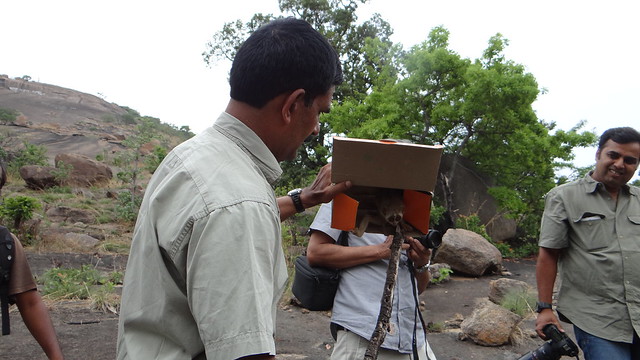 Gundappa Master takes out the little primate on a twig.
Gundappa Master takes out the little primate on a twig.
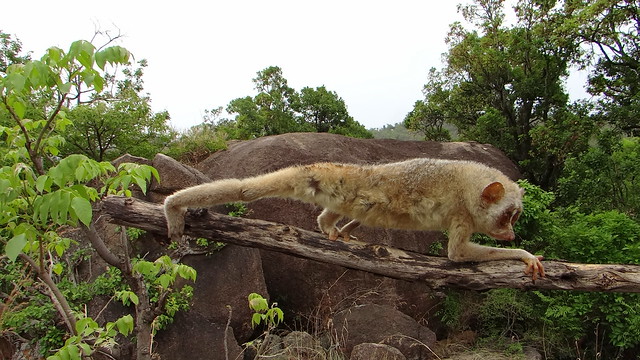 In Tamizh, we say, "thEvAngu mAthiri muzhikkAthEy!" (Don't stare at me like a Loris!)...now you can understand that!
In Tamizh, we say, "thEvAngu mAthiri muzhikkAthEy!" (Don't stare at me like a Loris!)...now you can understand that!
 Yash (in the pic), Gopal and I took photos. Chandu was content to enjoy the moment.
Yash (in the pic), Gopal and I took photos. Chandu was content to enjoy the moment.
 Gundappa Sir has been dealing with these animals for many years now, yet treats them with gentleness.
Gundappa Sir has been dealing with these animals for many years now, yet treats them with gentleness.
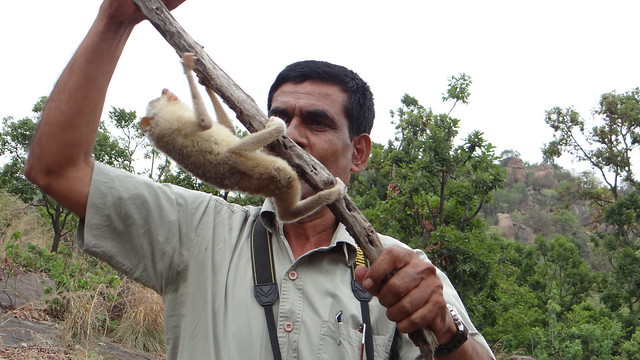
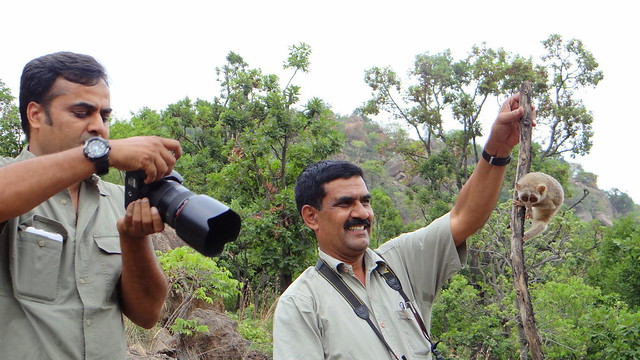 He shows the animal on the twig; it's an adult male, about two years old, he says. (I am asking in the video.)
He shows the animal on the twig; it's an adult male, about two years old, he says. (I am asking in the video.)
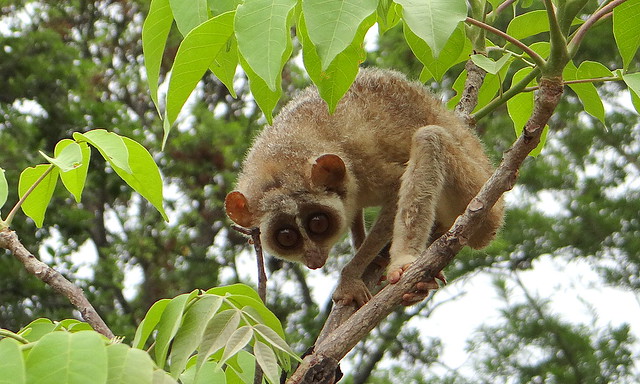 He finally releases the animal into a tree with plenty of foliage, where it proceeds to promptly hide itself:
He finally releases the animal into a tree with plenty of foliage, where it proceeds to promptly hide itself:
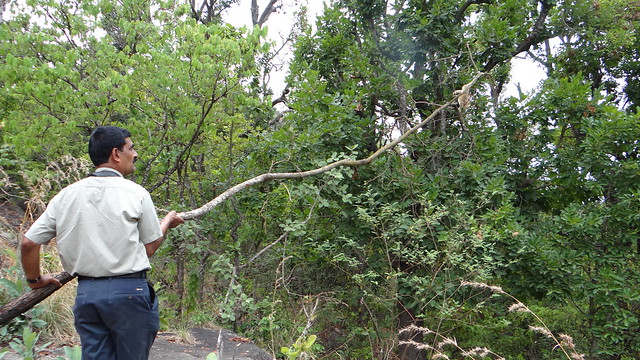 Off it goes:
Off it goes:
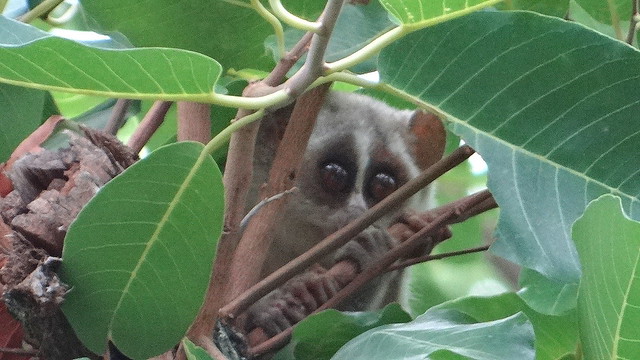 Here we are, trying to see whether it might be a leopard that is causing so much of alarm calls amongst the Hanuman Langurs around:
Here we are, trying to see whether it might be a leopard that is causing so much of alarm calls amongst the Hanuman Langurs around:
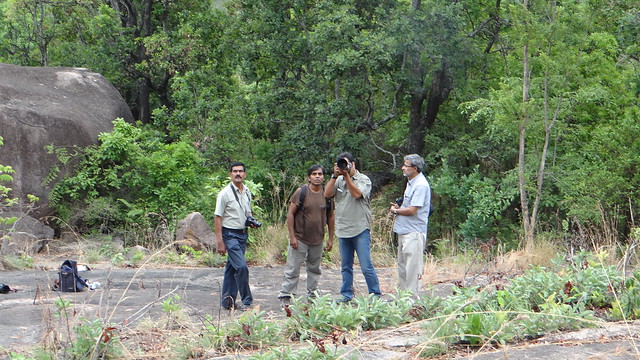 Now we are satisfied (we didn't see any leopard) and happy!
Now we are satisfied (we didn't see any leopard) and happy!
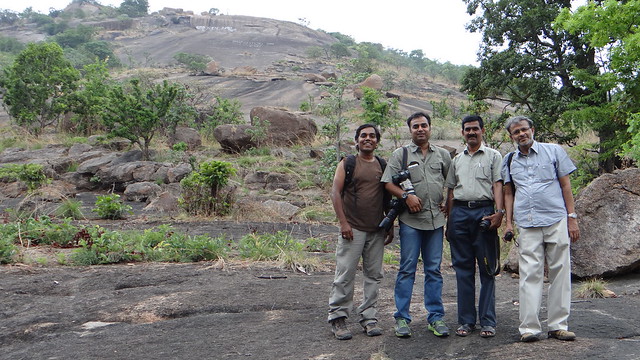
Here’s a warm salute to Gundappa Sir and the beautiful animal he works to protect.

